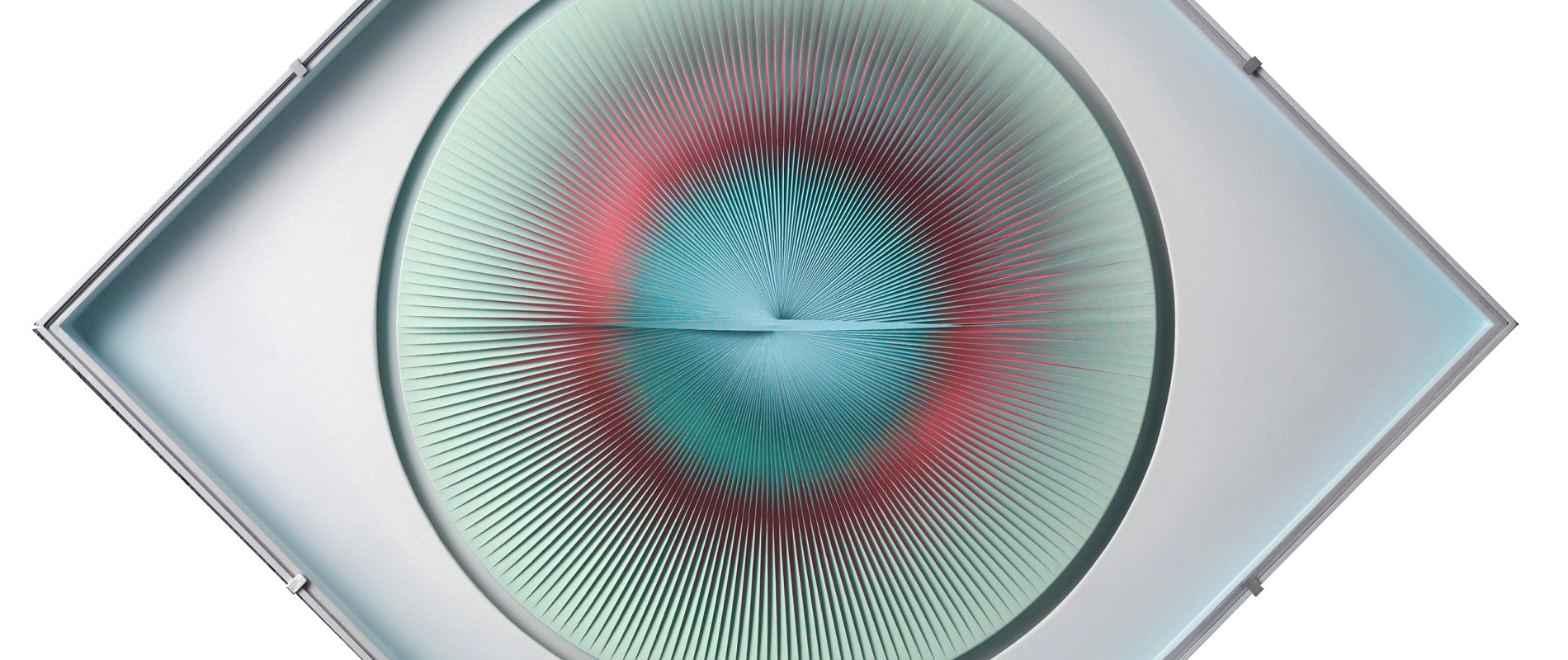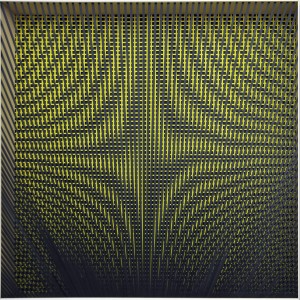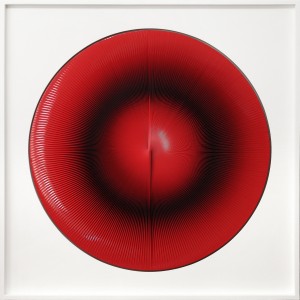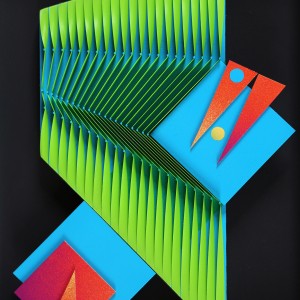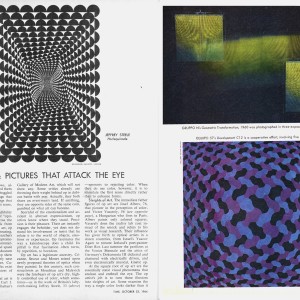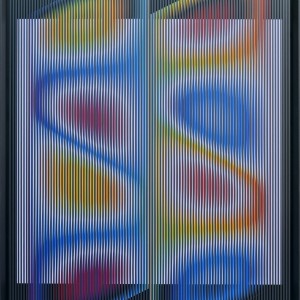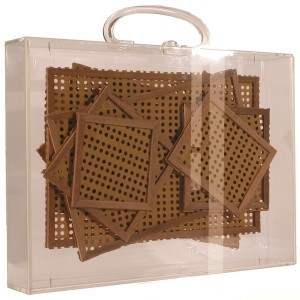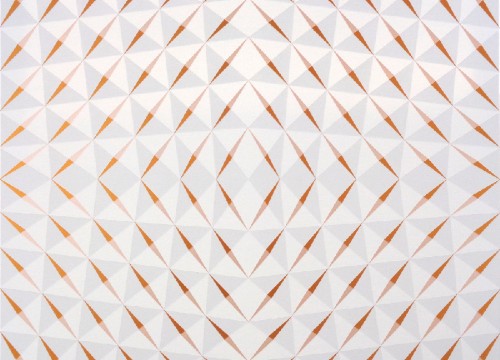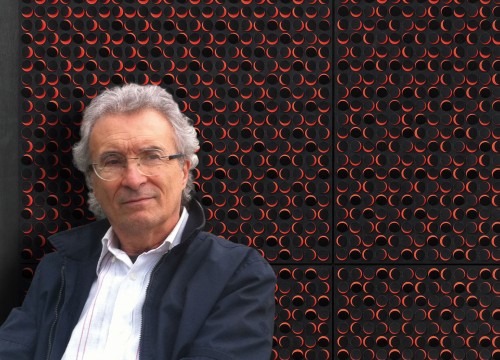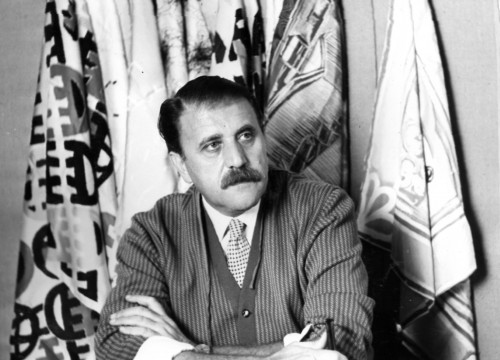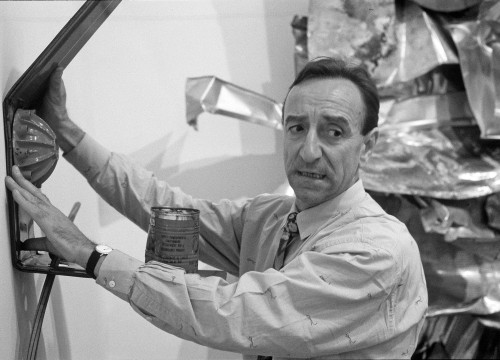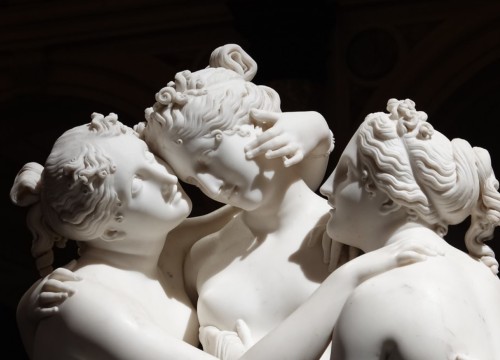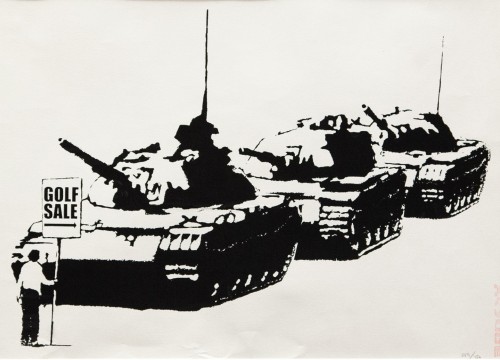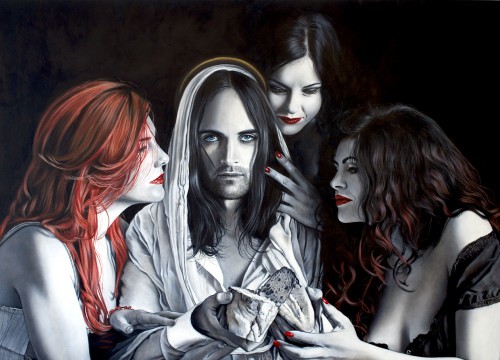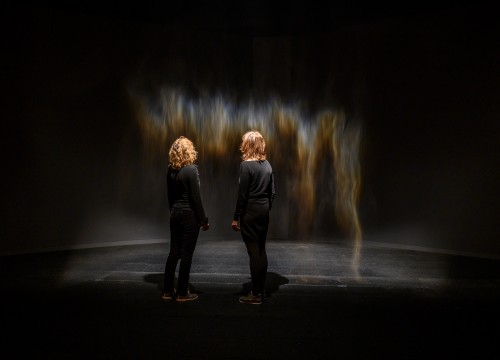An intense research between ‘58 and ‘60 is at the origins of the birth of the Trame and of the Oggetti ottico-dinamici
Alberto Biasi created the overlapping perforated papers entitled Trame from 1958 to 1960. Then, while in his twenties, he had started that research by chance, during an experience he had undertaken following the advice of his father Giuseppe who, by family traditions, wanted him to be an expert in agronomy. Contrary to his desire to attend the art school, he was enrolled in the classical high school and during a summer break he attended a course of the Silkworm Institute of San Giacomo di Veglia. Obtained the diploma as a silkworms breeder, he advised farmers by supplying them with perforated papers for the replacement and cleaning of bedding. And so, during that experience he realized that, playing with perforated papers, unpredictable visual effects were obtained, particularly when these were manipulated and made to slide on each other over a flat surface. Once overlapped and spaced between them, they provoked a hypnotic optical dynamism, giving rise to light effects and changing shapes.
THE PERFORATED PAPERS USED BY SILKWORM BREEDERS INSPIRED THE CYCLE OF TRAME REALIZED IN '58
After the Trame, real ready-mades, Biasi created the so-called Oggetti ottico-dinamici consisting of gauze, metal nets or paints later combined with PVC strings. Their peculiarity consists in the overlapping of linear and material structures arranged on different planes, but with different distances and depths, therefore perceptible dynamically in the space-time dimension.
“The phenomenon of dynamism”, Biasi explains, “appears only looking at the work, not its photography, which is always stationary. On the other hand, the image of the artwork, conceived in four dimensions, knows how to move and knows how to stand still, interfering with the eyes and the movements of the viewer. This is the movement that has won me over as a painter”.
THE OGGETTI OTTICO-DINAMICI OF THE '60S DERIVE FROM THE CHANGING VISIONS CAUSED BY NATURAL PHENOMENA
Since the sixties, the Master focused on the analysis of the changing visions caused by natural phenomena such as rain and light. The interference figures fascinate him, created for example by overlapping grids with different angles or by parallels with differently spaced meshes known as moiré effect. The term, used in printing and in the textile industry to define a type of fabric with changing effects, did not like to him, who for the works of those years preferred the name Oggetti ottico-dinamici. The titles, however, were given from time to time, based on the image suggested by the interference effect: Iperbole, for example, was the first Ottico- dinamico dated 1960 then proposed as Geometric Transformation.
IN THE WORK GOCCE, MADE OF PERFORATED SHEET METAL ON PAINTED CARDBOARD WE SEE CONCENTRIC CIRCLES IN MOTION
This artwork captured the attention of Hans Richter who, in May 1963, visited Gruppo N. This is witnessed not only by the vivid memory of Biasi, but also the dedication written by Richter on the catalogue of his solo exhibition at Galleria Pagani. Observing the works, the German artist and director is amazed by the contiguity of Biasi’s research and those just published in the magazine “Scientific American”. Preserved in a private collection in Padua, Geometric Transformation is one of the first works of the cycle to be documented. The artwork is inspired by the sieve, a common tool used to sift flour, and consists of two levels (a metal mesh and PVC slats) that together generate changing visual configurations attributable to hyperbole. The photographs of the object were published in October 1964 on “Time” in the famous article Op Art: Pictures That Attack the Eye that will mark the arrival of Optical Art in the United States.
"THE ARTWORK, CONCEIVED IN FOUR DIMENSIONS, KNOWS HOW TO MOVE AND KNOWS HOW TO STAND STILL, INTERFERING WITH THE EYES AND THE MOVEMENTS OF THE VIEWER"
To give the idea of dynamism, the American photographer uses as an expedient the sequence of the same image in fading. Although this attempt is insufficient to restore the effect of dynamism, it is significant that even then the inadequacy of photography in front of such objects was intuited.
The “distance of the levels’’ is the technique behind many works of the 60s related to water, images that magically appear in motion and that belong to the cycle of the Rilievi ottico-dinamici, very different from other works by Biasi such as the Torsioni, Politipi and Assemblaggi. An example is the work Gocce (1962) made of perforated sheet metal on painted cardboard, in which we see concentric circles in motion, as when drops fall on a liquid surface. In reality both drops and movement are a magical fruit of the visual and mental processing of the viewer.

